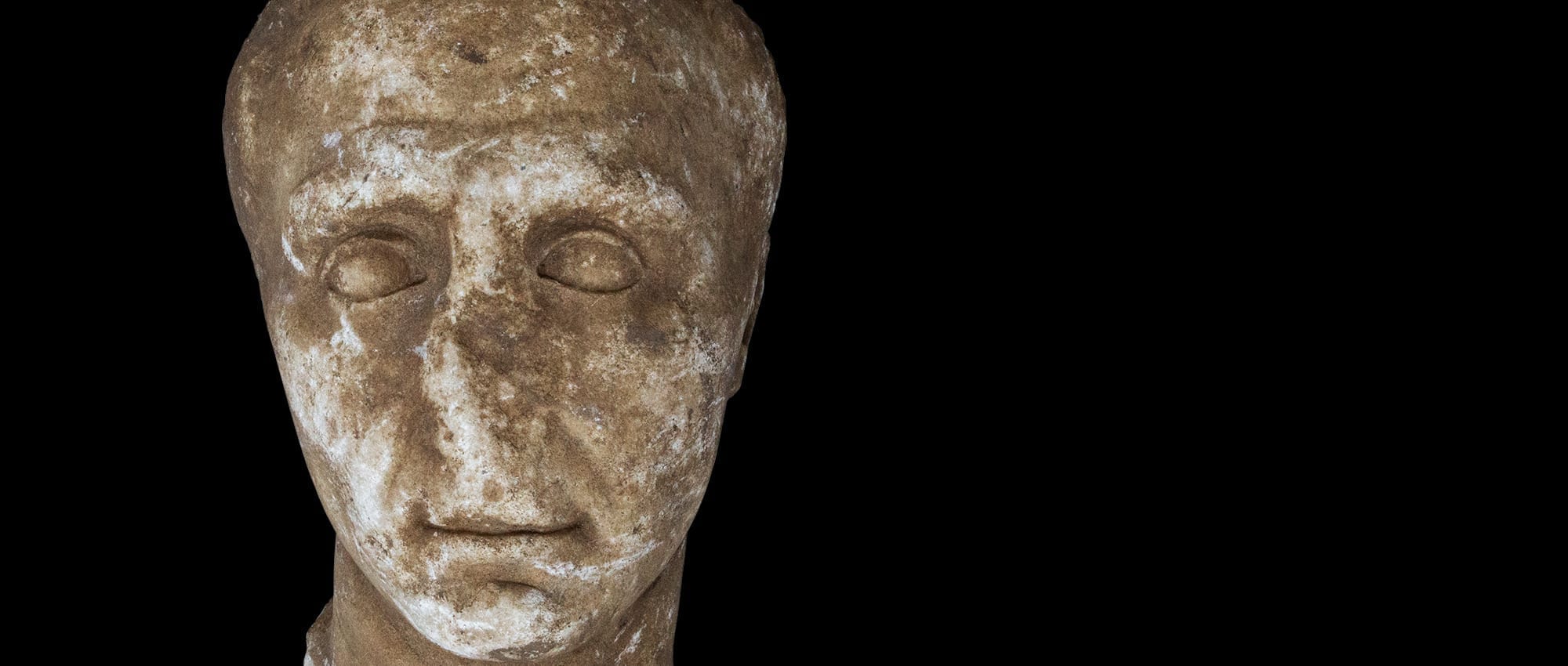Exhibition period: October 10th 2019 – March 15th 2020
From October 10th 2019 you can get up close to four ancient marble heads at the Glyptotek. The museum has been given the unique opportunity of exhibiting four Roman portraits that are approximately 2,000 years old and have only recently been unearthed in the ancient city of Aquinum (present-day Castrocielo) south of Rome. One of the portraits is especially interesting, because there is a possibility it could be a portrait of Caesar. Throughout history many different portraits have been identified as Caesar, but only very few have ever been confirmed as portraying the famous Roman. The portrait in the exhibition shares a number of features with descriptions of Caesar, although many of these are often seen in portraits of the period so it is impossible to be certain.
The possible portrait of Caesar and the other three heads are part of a major research project on polychromy – the use of colour during classical Antiquity. The newly excavated heads will be on display at the museum while the research team at the Glyptotek investigate them one by one for traces of colour. The investigation itself will be not be done in public.
Fresh from the Excavation
The four marble heads come to the museum directly from the excavation site. They have not been cleared of earth or mounted on plinths, which gives visitors to the Glyptotek a unique opportunity to see what they looked like immediately after the archaeologists removed them from the ground. Crucially this also means our research team can analyse traces of colour that are as fresh as possible. Any traces of colour – often invisible to the naked eye – will stem from when the heads were originally painted, and could therefore represent a significant contribution to our knowledge of what Roman sculptures looked like when they were created around 2,000 years ago.
The heads with traces of earth stand in sharp contrast to the sculptures visitors usually see on display at the Glyptotek. Originally all these heads looked different too, painted in a vast array of colours to make them as lifelike as possible. The original paint has disappeared after centuries and millennia underground – and due to the heavy-handed methods used to clean artefacts that were excavated and transported to museum collections worldwide during the 19th and early 20th century.
Ancient Colours
The Glyptotek has been researching the colours of Antiquity for more than a decade, and is currently at the forefront of the field. Our researchers systematically register, document and analyse microscopic traces of colour that have been preserved on ancient sculptures. Around 150 of the sculptures in the museum’s collection have already been investigated for traces of colour. Results so far show that most ancient sculptures were painted, and looked very different to the white marble we see today.
You can read more about the Glyptotek’s polychromy research here.
By analysing the four newly excavated portraits our researchers can compare their results with results based on their analysis of the sculpture’s in the Glyptotek’s collection. A thorough analysis of the four heads can make a significant contribution to our knowledge of ancient art, and the analysis will hopefully tell us not only how the sculptures were originally painted, but also provide invaluable information about how the past century of storage and display in museums has impacted on the polychromy of ancient artefacts.
Thanks
Thanks to Kirsten & Freddy Johansens Fond and the Carlsberg Foundation for making both the research and the exhibition possible. Thanks too to the University of Salento who have conducted the excavations in Aquinum, as well as Soprintendenza Archaeologica Belle Arti e Paesaggio di Frosinone, Latina e Rieti, and the Municipality of Castrocielo for the generous loan of the portraits.
Calendar
See the exciting activities and events, the Glyptotek has to offer. Please note, the events in Danish will not be presented here. Go to the Danish version of the homepage to see all events.
Café
Enjoy a delicious lunch at Picnic overlooking the Glyptotek's beautiful Winter Garden.
After Nature
Experience a new reading of the Glyptotek’s paintings by the Danish writer Josefine Klougart
